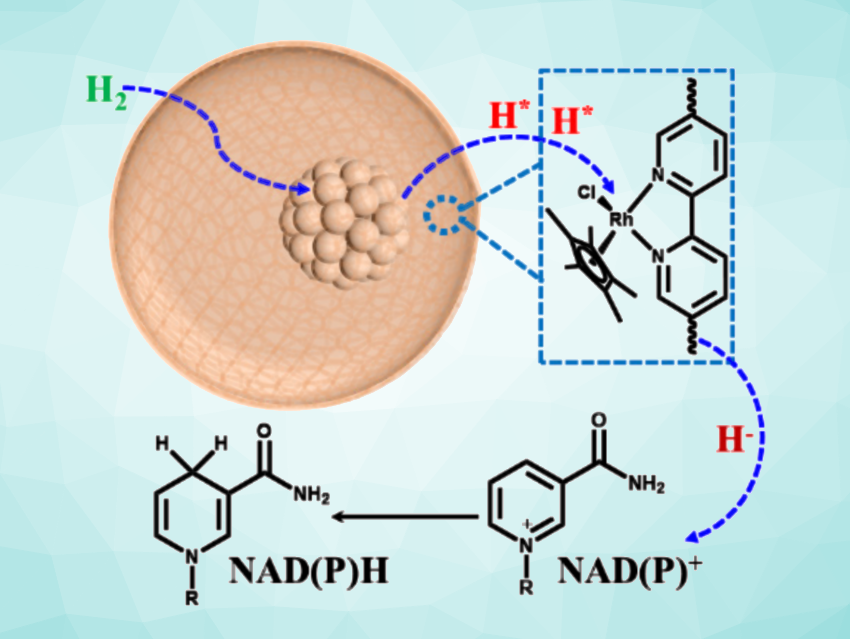Nicotinamide adenine dinucleotide (NADH) and its phosphorylated form (NADPH) are important hydrogen sources in enzymatic reduction reactions. When these processes are employed for catalysis outside of cells, using stoichiometric NAD(P)H is generally too expensive, and using a catalytic amount of the oxidized cofactor NAD(P)+ is preferable. This requires the regeneration of NAD(P)H from its oxidized form. H2-driven NAD(P)H regeneration is particularly promising, and combining homogeneous metal complex catalysts and supported metal nanoparticles (NPs) can provide hydrogenation catalysts with good activity. However, homogeneous metal complexes are generally not compatible with enzymes.
Qihua Yang, Zhejiang Normal University, Jinhua, China, and colleagues have developed a core-shell nanoreactor that integrates metal nanoparticles and metal complexes for H2-driven NAD(P)H regeneration. The team used Ni/TiO2, which was prepared by a wet-impregnation method, as the core material. This material was coated with a bipyridine-containing 3D porous organic polymer using 2,2′-bipyridyl-5,5′-dialdehyde (BPY) and 4,4′,4”,4”’-(adamantane-1,3,5,7-tetrayl)tetraaniline (TAPA) as monomers. This was followed by coordination with [Cp*RhCl2]2.
The core-shell nanoreactor achieved a selectivity of 90.8% in NADH regeneration. Compared with the corresponding single-component metal NPs and the immobilized Rh complex, the integrated catalyst showed enhanced activity and selectivity in NAD(P)H regeneration. The team attributes this effect to the migration of activated H species from the metal NPs to the Rh complex (pictured). The porous polymer prevents the direct interaction of enzymes with the Rh complex, providing the desired compatibility. The team successfully coupled the core-shell nanoreactor with the enzyme aldehyde ketone reductase (AKR) for the chemoenzymatic asymmetric reduction of acetophenone.
- Enzyme‐Compatible Core‐Shell Nanoreactor for In-Situ H2‐Driven NAD(P)H Regeneration,
Maodi Wang, Huicong Dai, Qihua Yang,
Angew. Chem. Int. Ed. 2023.
https://doi.org/10.1002/anie.202309929




